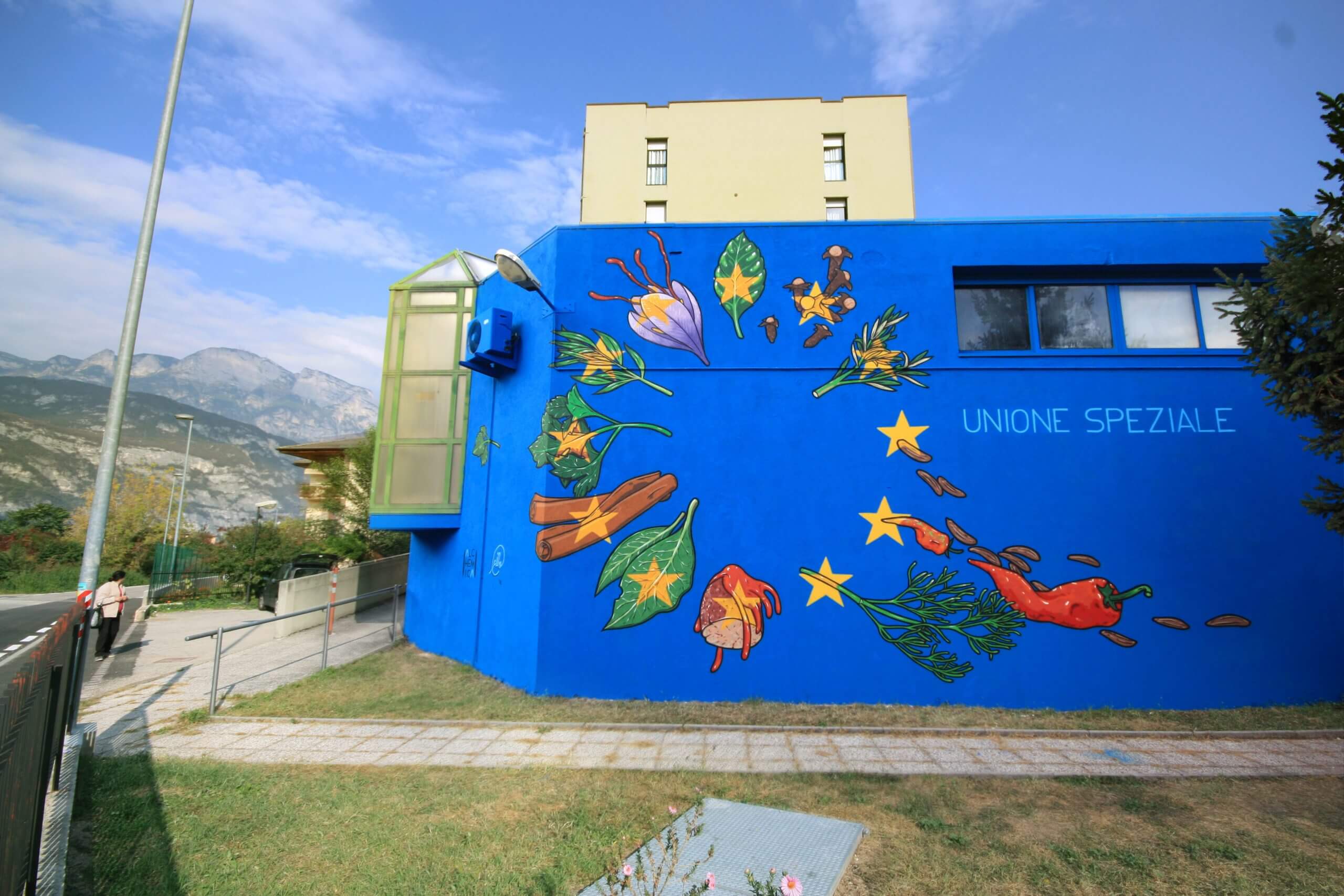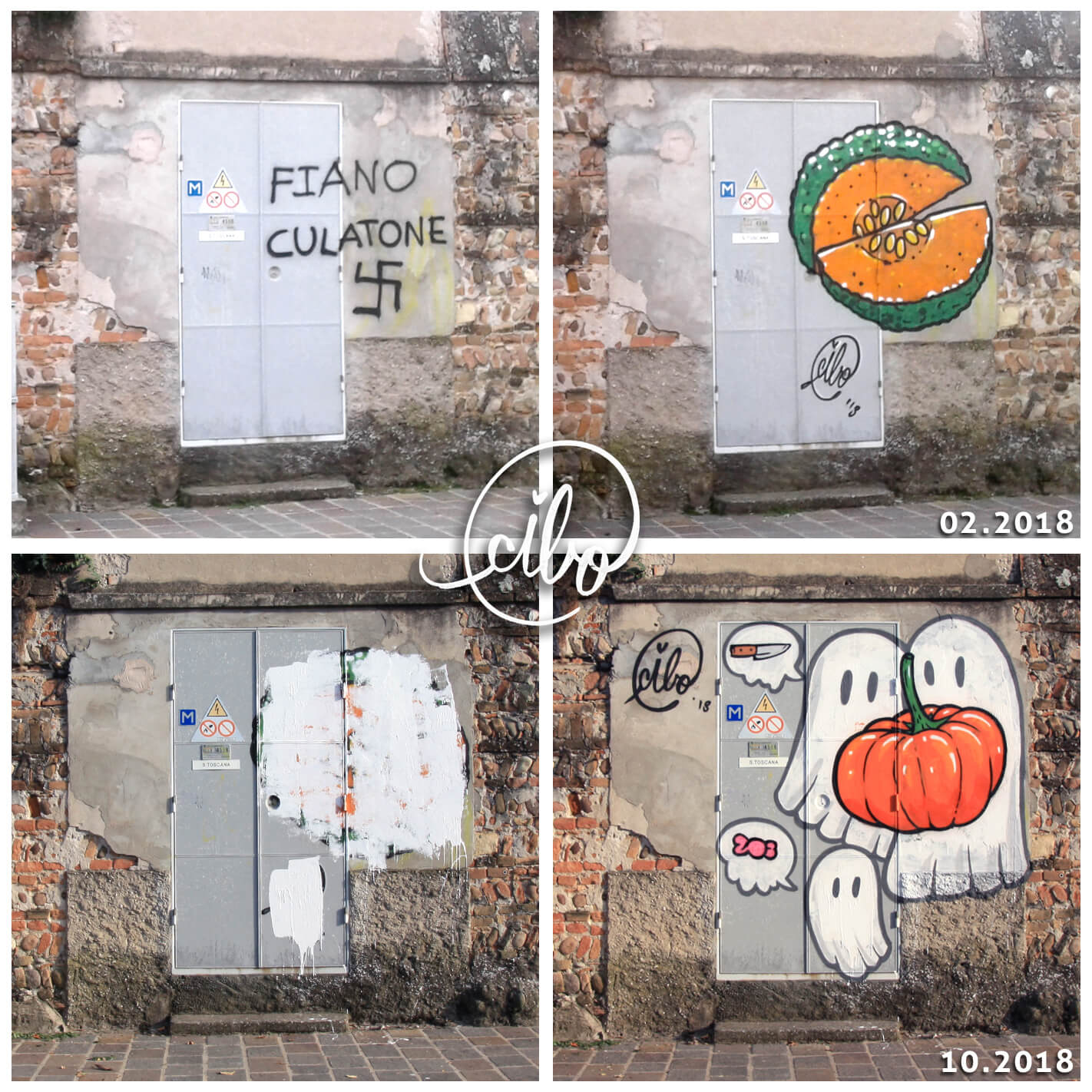CIBO: Urban Art Against Hatred

“I chose street art to bring opponents into my world to make them lose every time and responding in an increasingly beautiful way. We Italians are famous for things to eat, so in my own way I want to show that here you can resist”. So, Pier Paolo Spinazzè (1982) a.k.a. Cibo, is an international street artist with his aim at peace and union, without distinction. For over twenty years, his modus operandi has been to transform any written element or symbol of hatred within various cities into culinary forms. A graduate of the art high school, and then Design at the University of Venice (IUAV), Cibo launched the eponymous project of inclusion – and not exclusion – of people in society roughly ten years ago. In the past, he has collaborated with LEGO and instead of being paid for his work, he thanked them for the games that they had “unconsciously” gifted to him during his childhood. FRONTRUNNER gets deliciously close to Cibo.
Why did you choose the theme of food to communicate your art?
Because food is a universal language that belongs to everyone. It is easy to understand and tells the traditions and also for the opponents, for the fascists, it is difficult to cancel a work of mine that conveys happiness with its shapes and colors, above all with the Italian flag. In addition, I have 4-5 signatures that I use based on what I design and also based on the topic, my technical approach that I define with stencil and quartz painting (lasting colors).

Unione Speziale (“European Union”), 2018
Installation view
Trento, Trentino-Alto Adige, Italy
Courtesy of the artist
Do you have trouble doing your job?
Yes. I’ve always done murals with friends, and I’ve always been used to managing cities in a different and free way. Then in Verona, my city, where the presence of the Nazi-Fascists is very heated, I decided to go on the street not so much for art, but from the social point of view against weapons, as a civic commitment as it could be for those who volunteer. With my art, I give something in exchange to the city.
Were there any particular episodes you wanted to recount?
I’ve had problems with some adversaries: swastikas outside the home and various threats, even to my family. Here you see the drawing behind the political forces of the extreme right which, in my opinion, is not political. In particular: on May 1, 2008, I lost a dear friend at their hands and did not belong to any political reality. They were beaten in a brawl. From this episode, I deleted every sign of the extreme right from the streets to eliminate all their traces of [them into] silence.
Which artwork are you most attached to, and why?
In Zevio, in the province of Verona, I made a work 1,100 square meters; it is a tribute to the campaign that welcomed me with its products and its traditions. It was an important experience that took a long time to accomplish alone.

In general, what do you think of street art in museums, in Italy and throughout the rest of the world?
Street art does not move you. It makes sense there and only there, not in museums. It is difficult to explain, and it must not have a price, because it must be free and must remain in place to explain the relationship with the territory.
In Italy, there are important names of street artists like Blub and others who work very well. But, there are situations in which it is difficult to relate to institutions. You [may] find it difficult to clarify that art is not taxed; you’d struggle in Italy, unlike abroad.

Zucca Zevio (“Pumpkin in Zevio”), 2018
Installation view (time-lapsed)
Zevio, Province of Verona, Veneto, Italy
Courtesy of the artist
What message have you not yet delivered?
I gave them all a bit, but maybe what has not been received very much is: what if I am on a social media network not to show how good I am, but to show others that if ideas are good, they should be shared? If you see a paper on the ground, you collect it, throw it away. So if there is a problem in your country, solve it. A civic sense must be had.
I don’t go around Italy cancelling swastikas, others could do it their own way. Everyone has their own answer and all are fine. It’s important to put your face on without complaining. Maybe because I’m a country boy and if I see the tall grass I cut it. I don’t call the Municipality.
Any forthcoming scheduled projects?
In Bolzano, I have a project with the Municipality where I will interact with children; I have writing to cancel, and I will teach them how to do it. Then in Ancona, with Legambiente, and other jobs abroad in France and in America. I plan on making merchandise.











